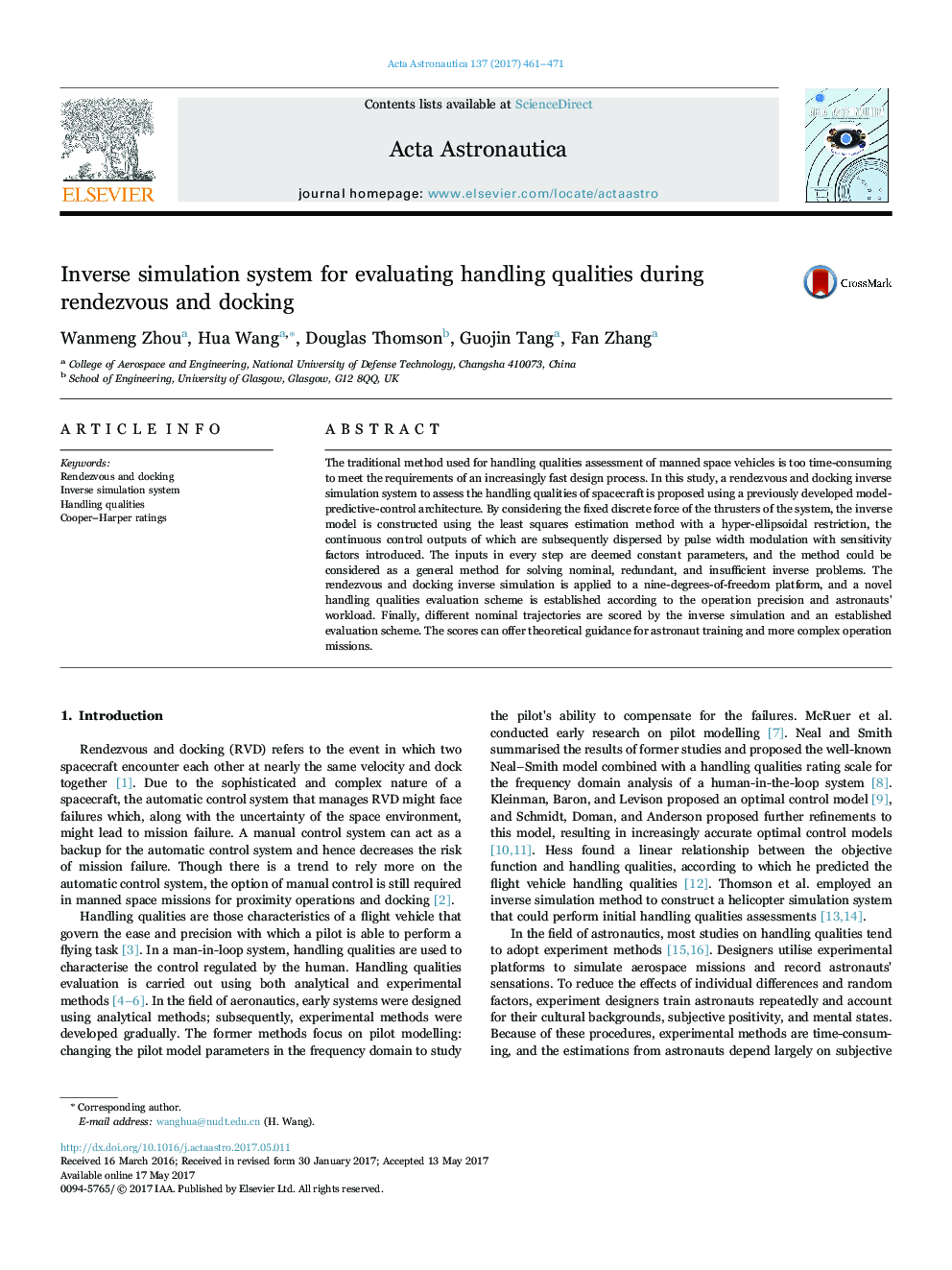| Article ID | Journal | Published Year | Pages | File Type |
|---|---|---|---|---|
| 5472458 | Acta Astronautica | 2017 | 11 Pages |
Abstract
The traditional method used for handling qualities assessment of manned space vehicles is too time-consuming to meet the requirements of an increasingly fast design process. In this study, a rendezvous and docking inverse simulation system to assess the handling qualities of spacecraft is proposed using a previously developed model-predictive-control architecture. By considering the fixed discrete force of the thrusters of the system, the inverse model is constructed using the least squares estimation method with a hyper-ellipsoidal restriction, the continuous control outputs of which are subsequently dispersed by pulse width modulation with sensitivity factors introduced. The inputs in every step are deemed constant parameters, and the method could be considered as a general method for solving nominal, redundant, and insufficient inverse problems. The rendezvous and docking inverse simulation is applied to a nine-degrees-of-freedom platform, and a novel handling qualities evaluation scheme is established according to the operation precision and astronauts' workload. Finally, different nominal trajectories are scored by the inverse simulation and an established evaluation scheme. The scores can offer theoretical guidance for astronaut training and more complex operation missions.
Related Topics
Physical Sciences and Engineering
Engineering
Aerospace Engineering
Authors
Wanmeng Zhou, Hua Wang, Douglas Thomson, Guojin Tang, Fan Zhang,
